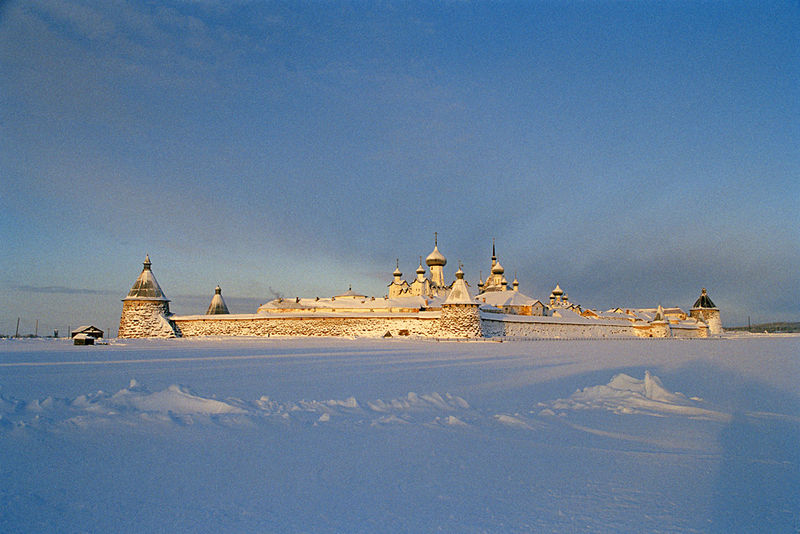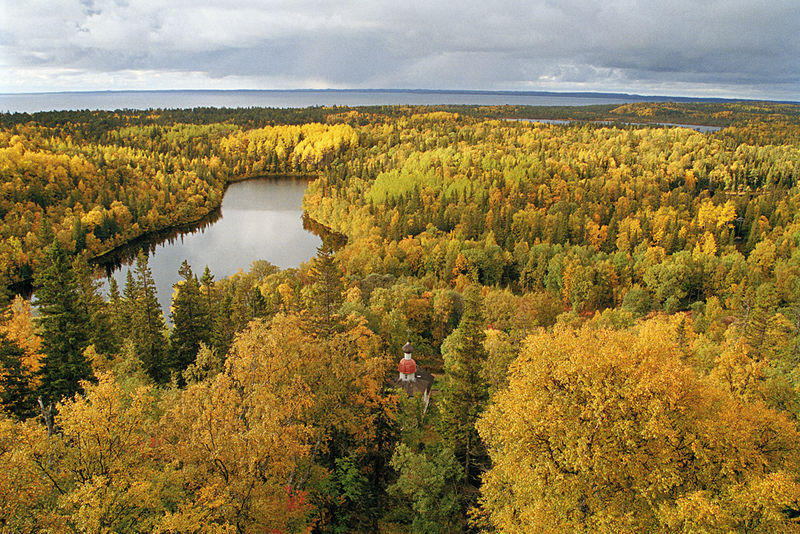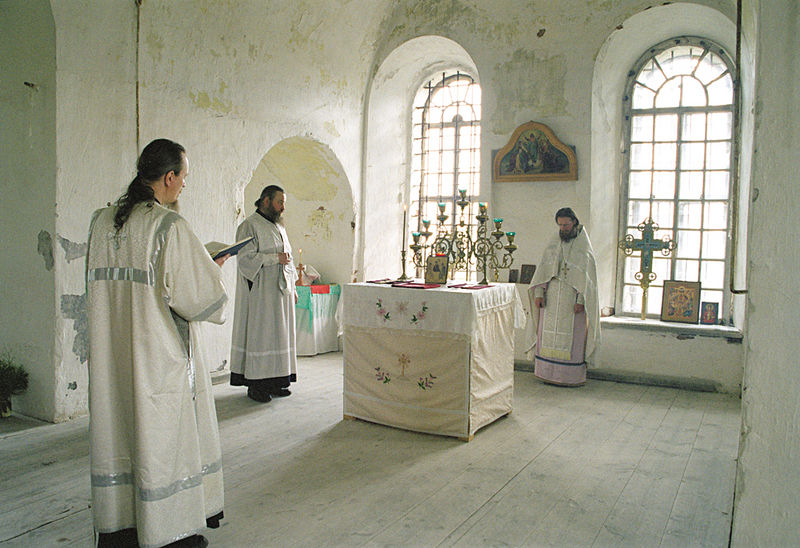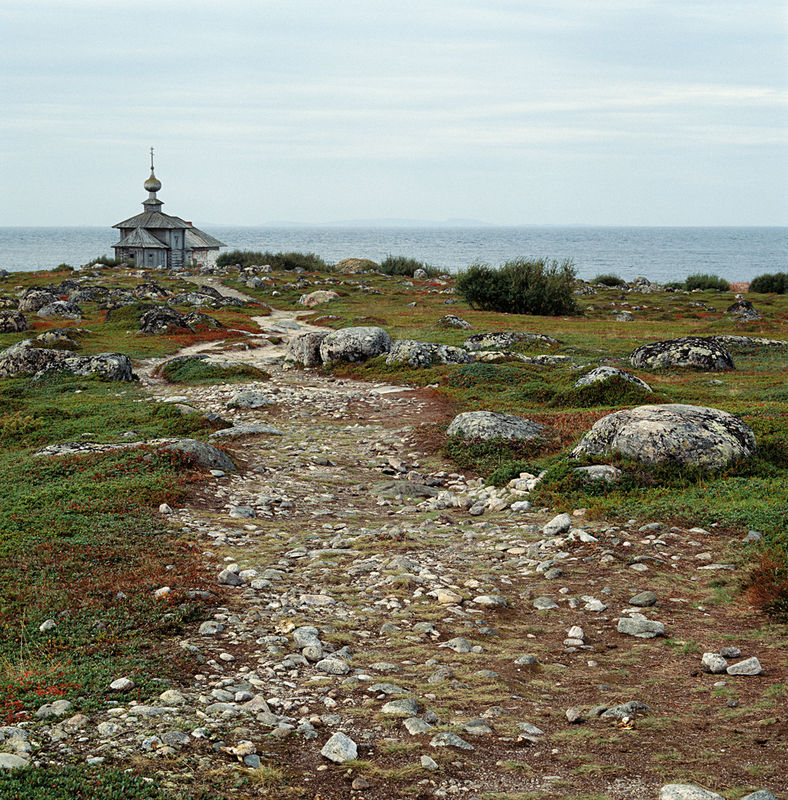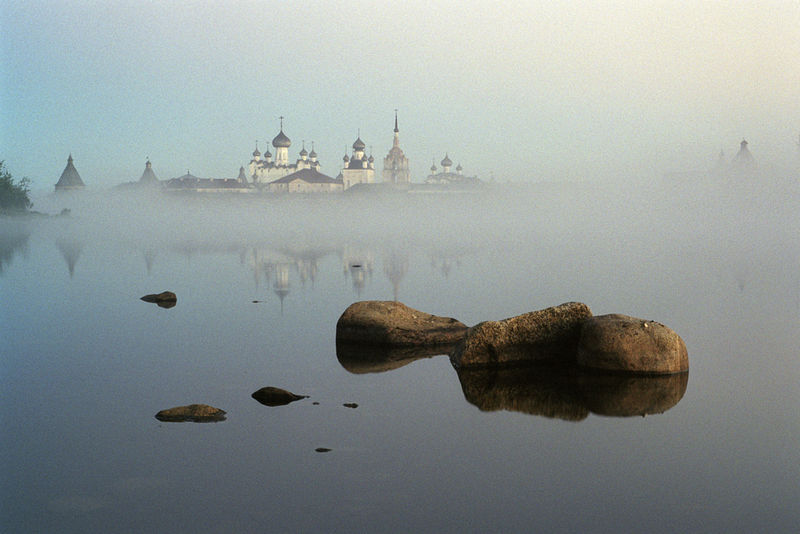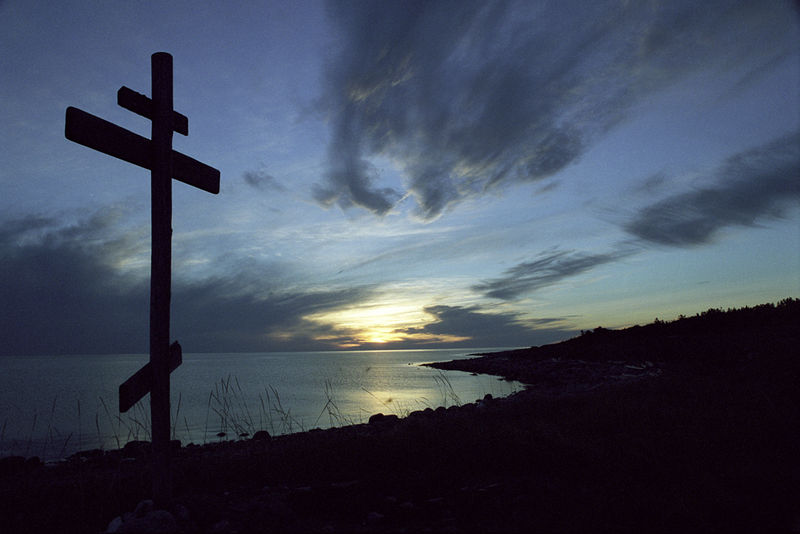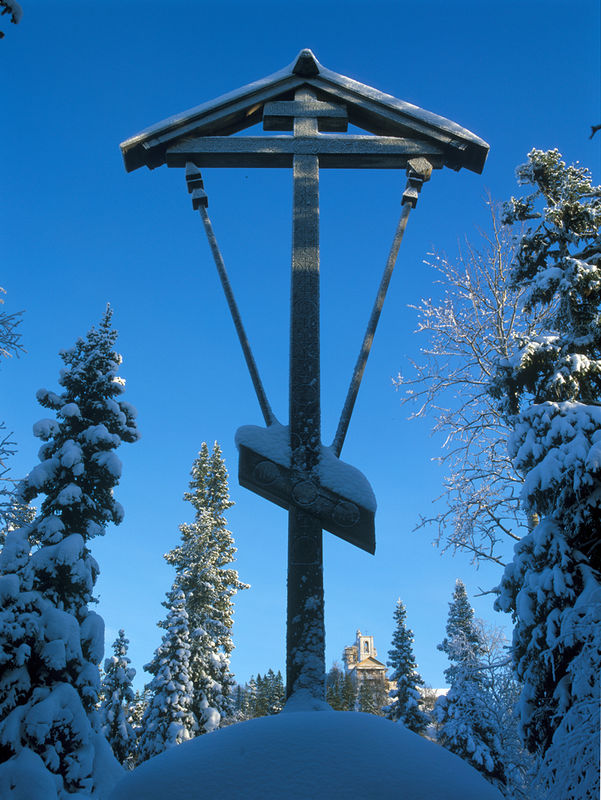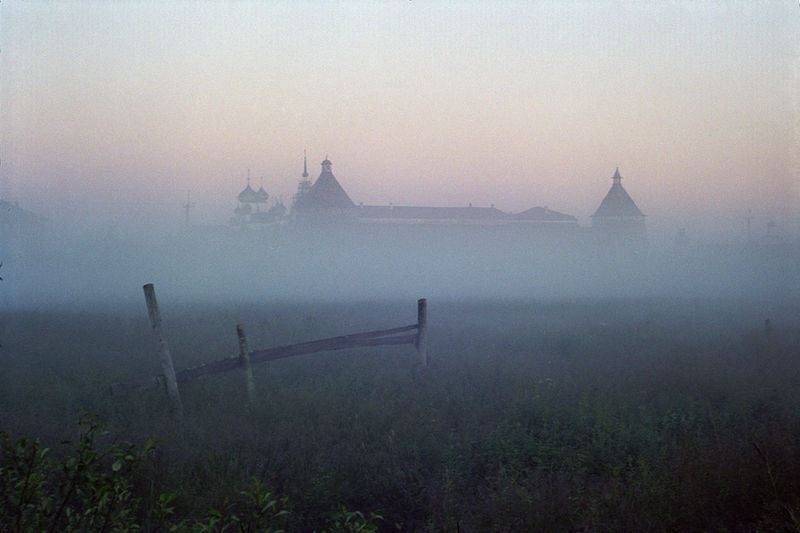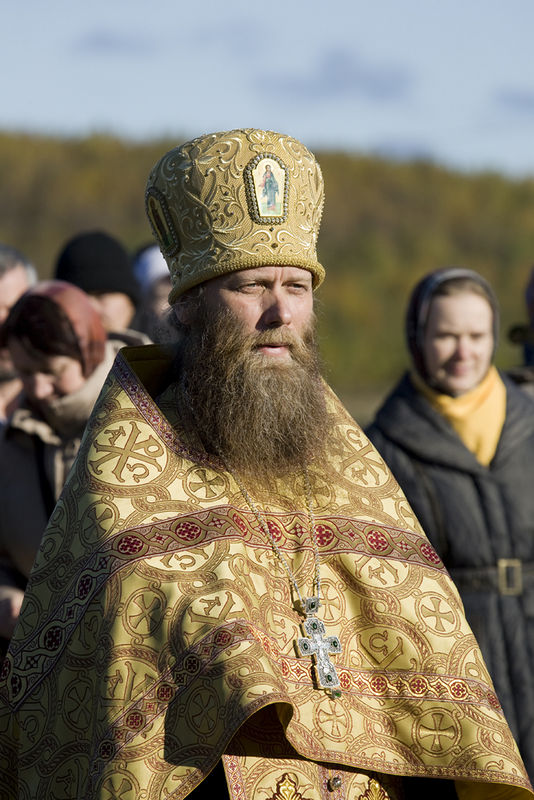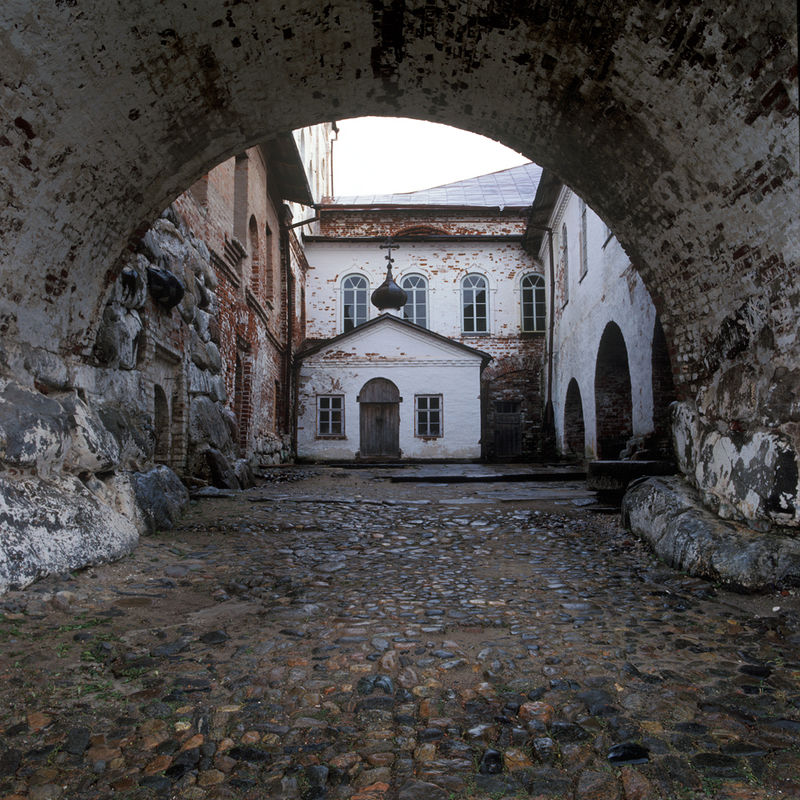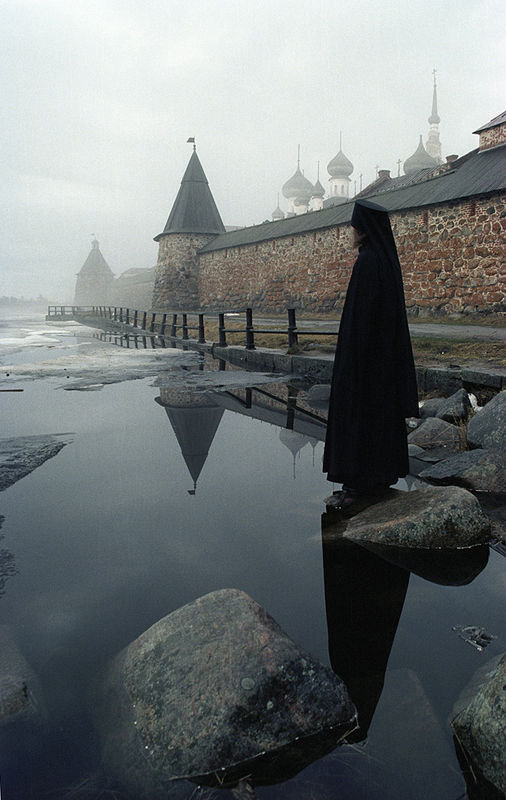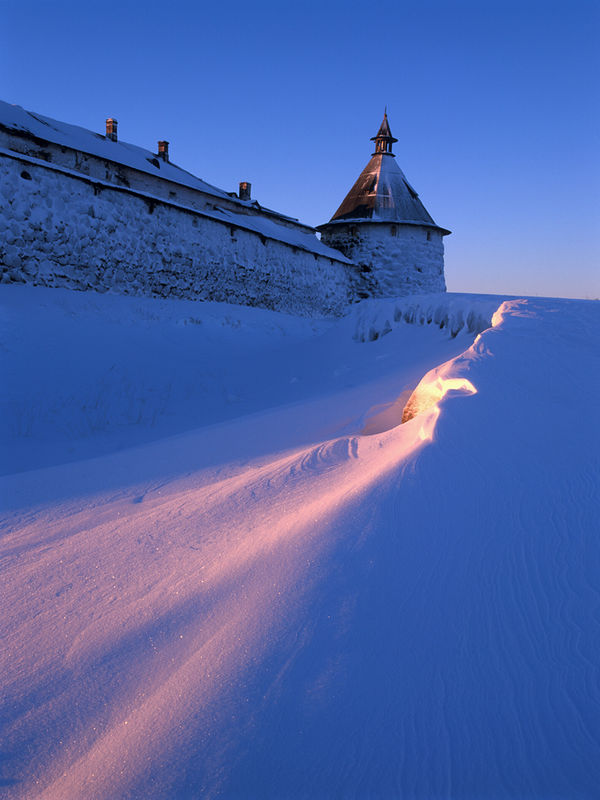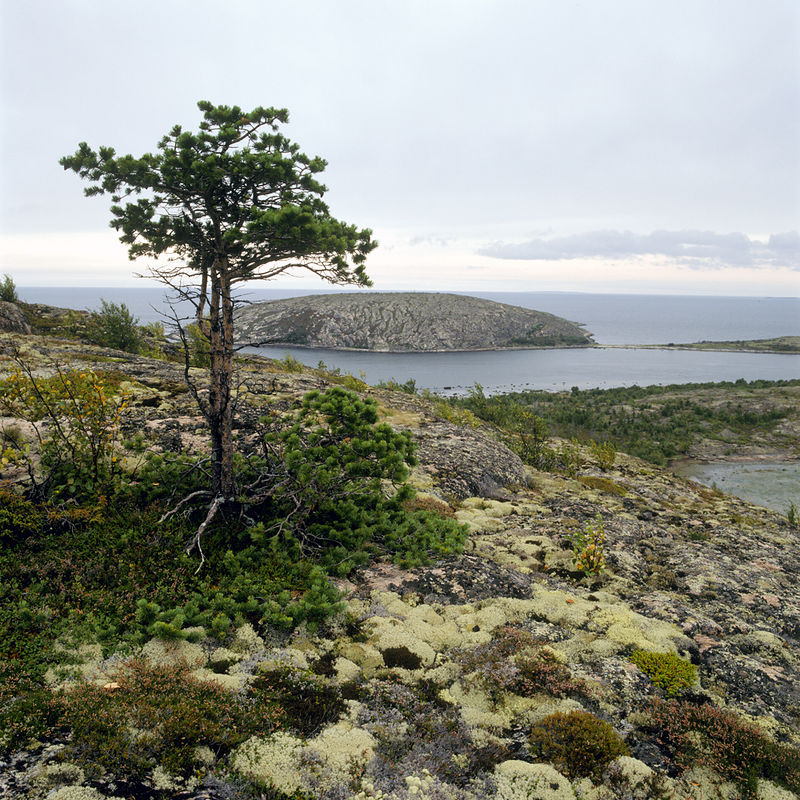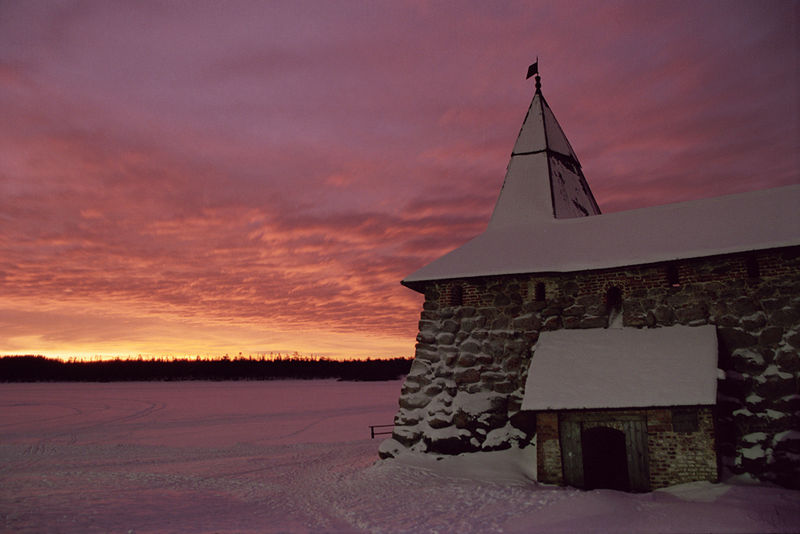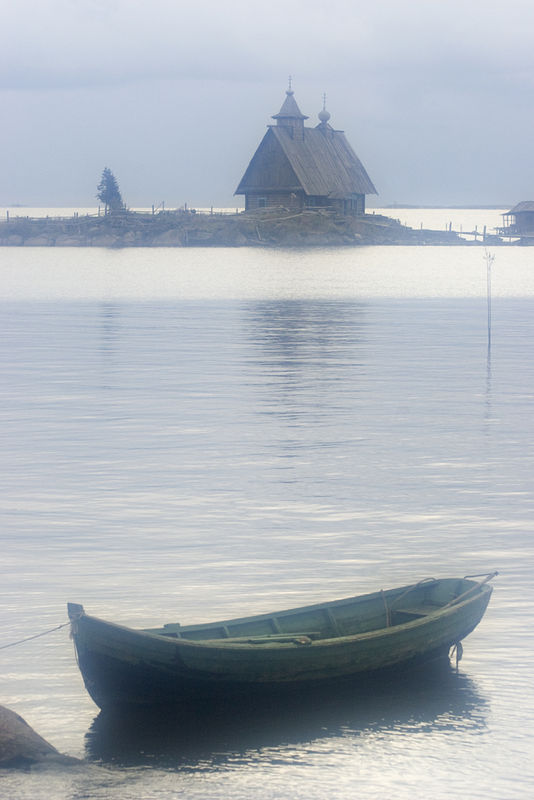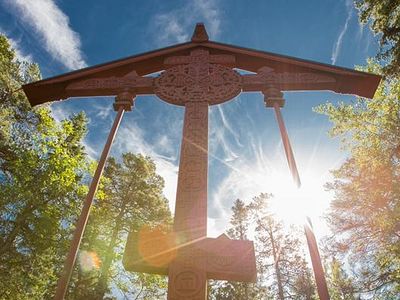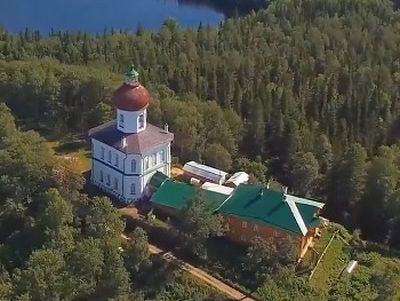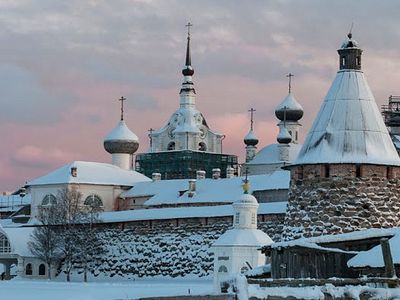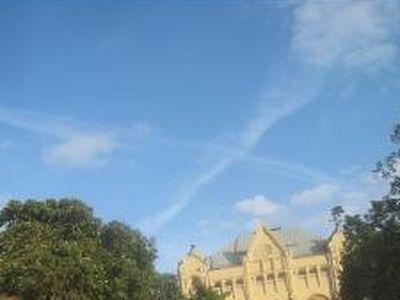The Solovki Islands clustered within the White Sea not far from the Artic Circle have been home to monastic prayer since 1429, when monks Herman and Savvatius arrived from the St. Cyril of White Lake Monastery to live the anchoretic life. Solovki Monastery was soon founded in 1436 by Monk Zosima, who became its first abbot. Since then the islands of Solovki have played a vast historic role in Russian national life.
In honor of these three saints of Solovki whom we celebrate today, we are revisiting selections from an amazing photo exhibit displayed in November of 2010 in the Christ the Savior Cathedral: "Solovki: Golgotha and Resurrection", dedicated to the twentieth anniversary of the renewal of monastic life at Solovki. The exhibition showed the history of Solovki Monastery from its height spanning the sixteenth through nineteenth centuries to the time of its discretion in the twentieth century, when it was turned into a concentration camp.
Here are photos by a participant in the exhibit, Sergei Veretennikov, showing the northern splendor of Solovki.
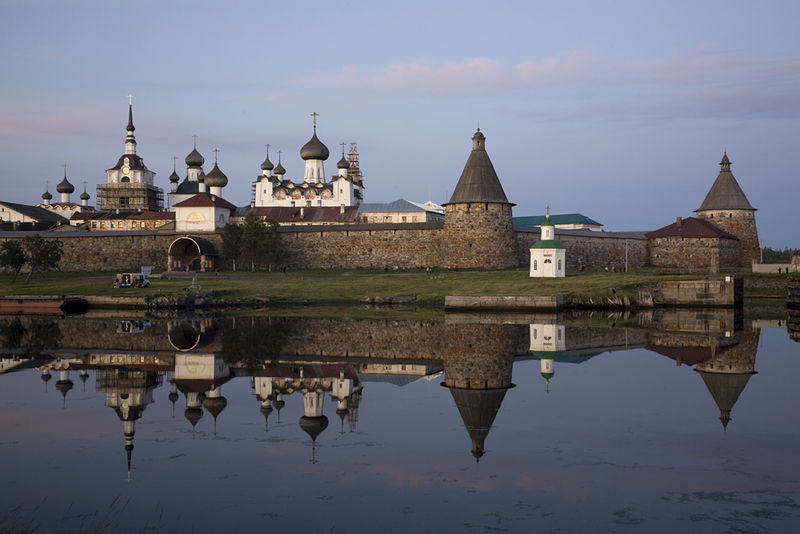 Panorama of Solovki Monastery
Panorama of Solovki Monastery
|
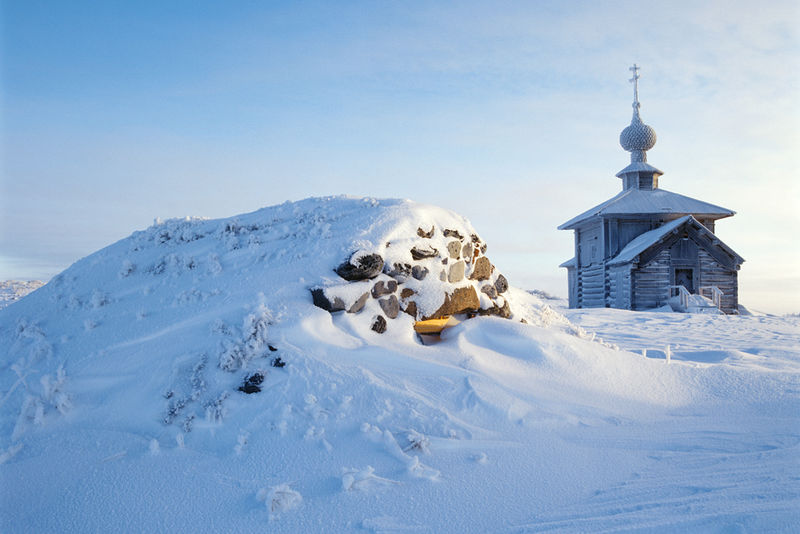 The Church of St. Andrew the First Called, on Large Rabbit Island.
The Church of St. Andrew the First Called, on Large Rabbit Island.
|
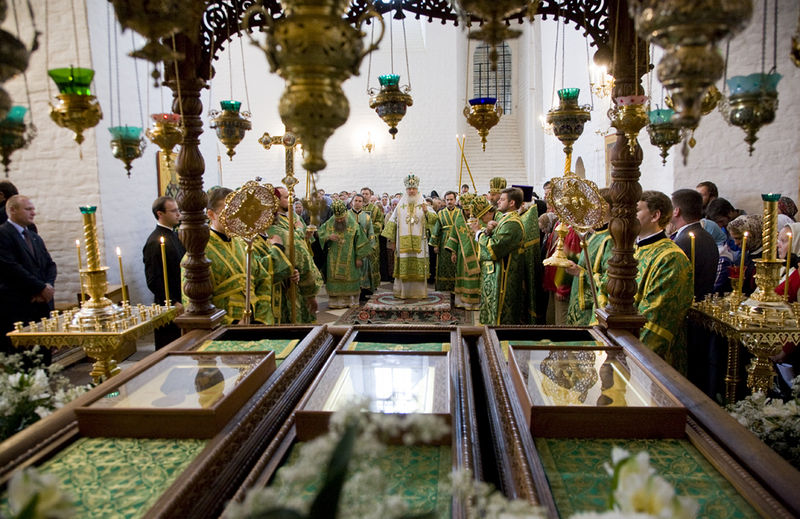 Patriarchal Service at the relics of Saints Zosima, Sabbatius, and Herman of Solovki.
Patriarchal Service at the relics of Saints Zosima, Sabbatius, and Herman of Solovki.
|
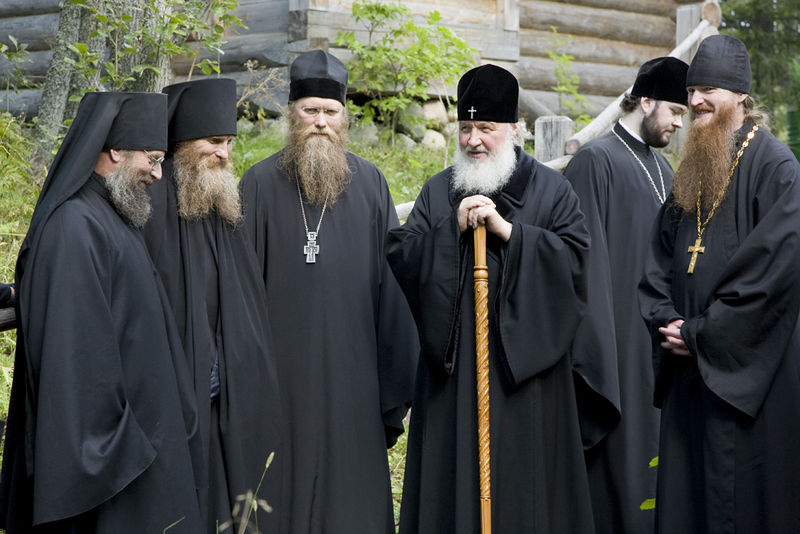 Patriarch Kirill with the brothers of the Golgotha-Crucifixion Skete.
Patriarch Kirill with the brothers of the Golgotha-Crucifixion Skete.
|
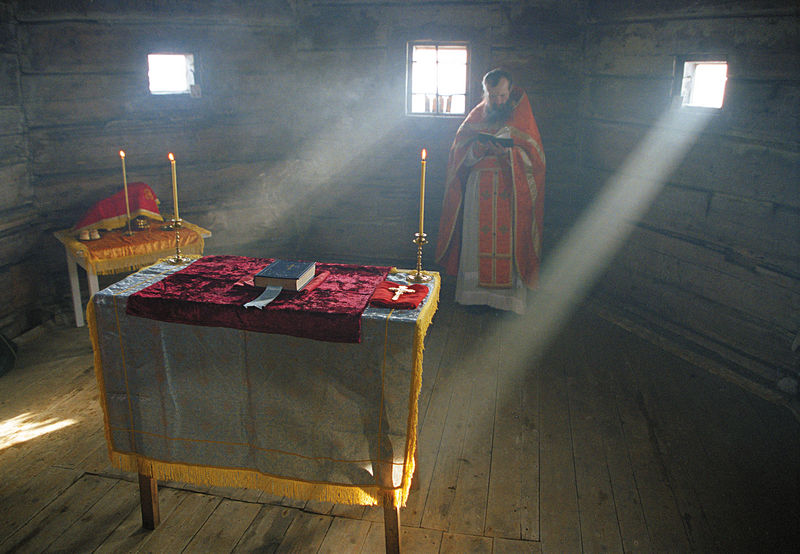 Liturgy in the Church of St. Andrew.
Liturgy in the Church of St. Andrew.
|
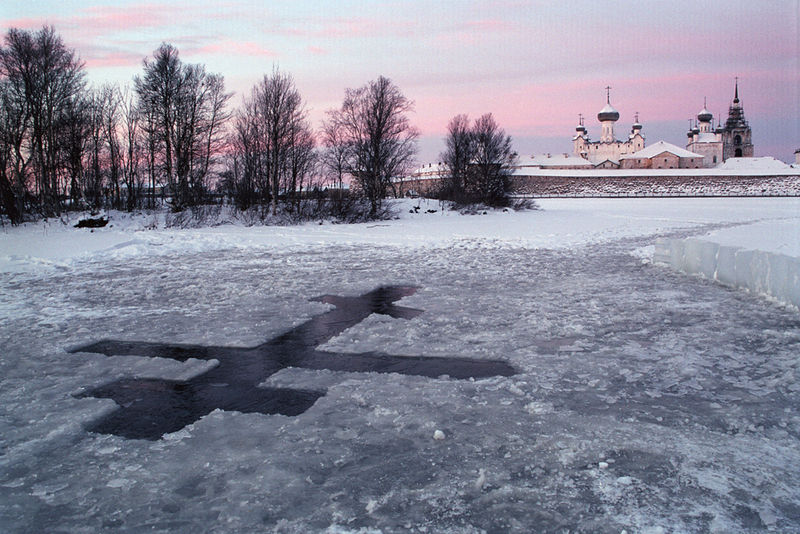 The "Jordan," where the brothers immerse themselves on Theophany.
The "Jordan," where the brothers immerse themselves on Theophany.
|
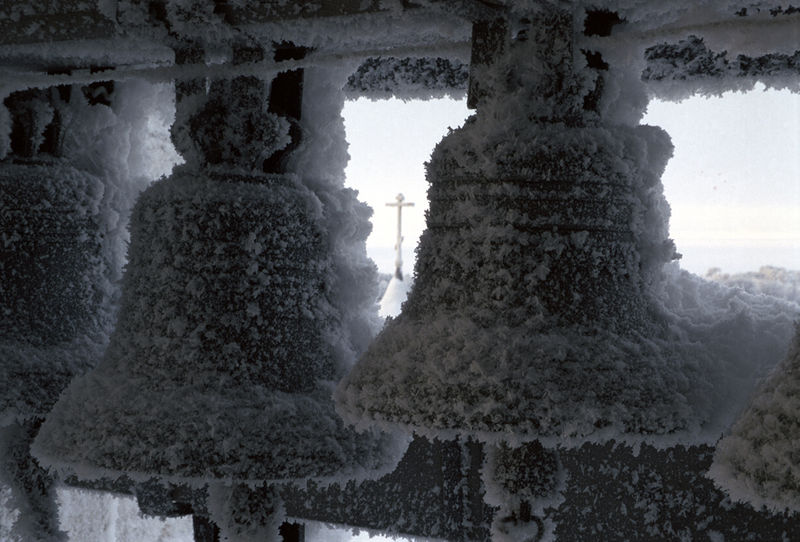 Bells in winter.
Bells in winter.
|
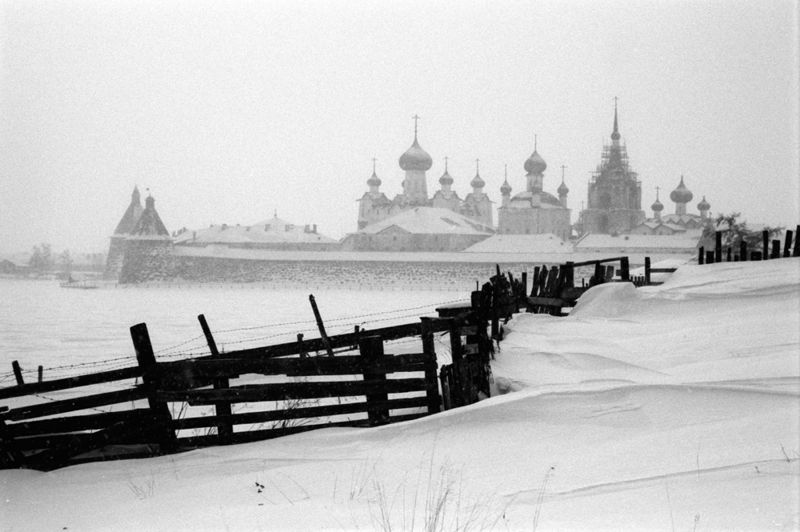 Winter.
Winter.
|
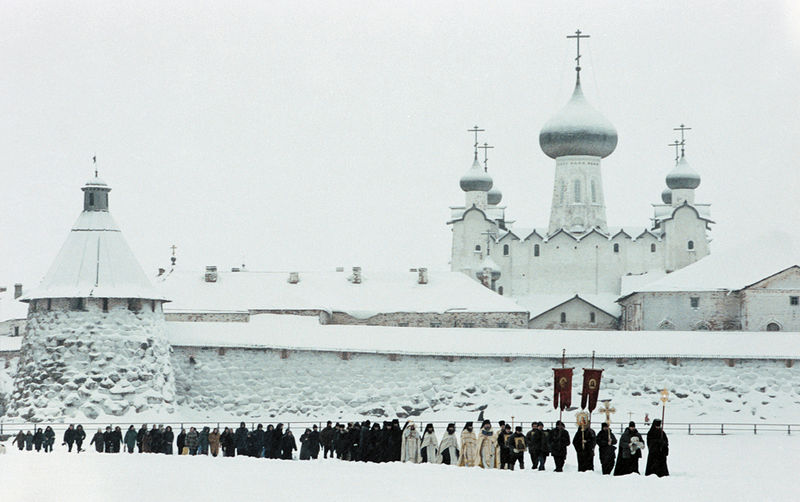 Cross procession with a blessing of the waters on the feast of Theophany.
Cross procession with a blessing of the waters on the feast of Theophany.
|
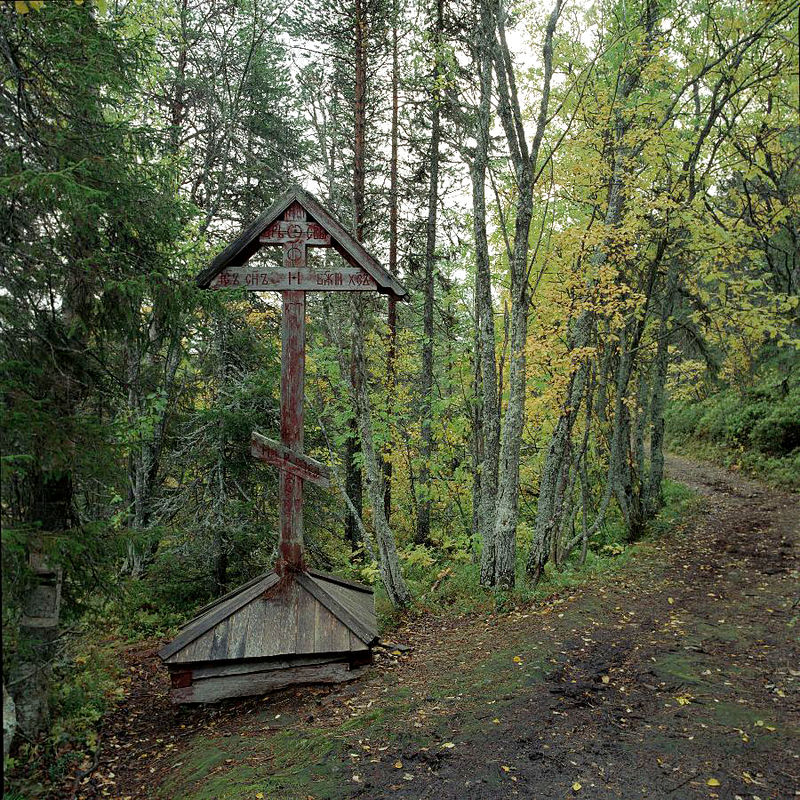 A veneration cross by a spring on Anzer Island.
A veneration cross by a spring on Anzer Island.
|
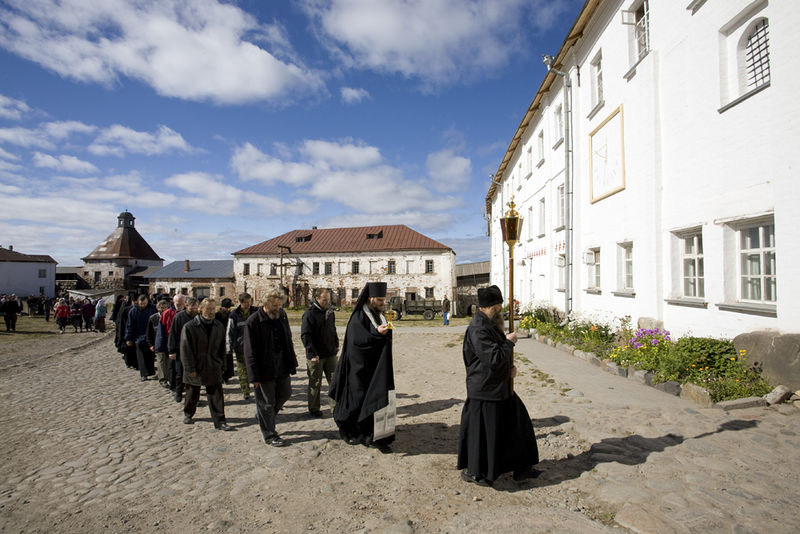 The procession with the Panagia, from church to refectory.
The procession with the Panagia, from church to refectory.
|
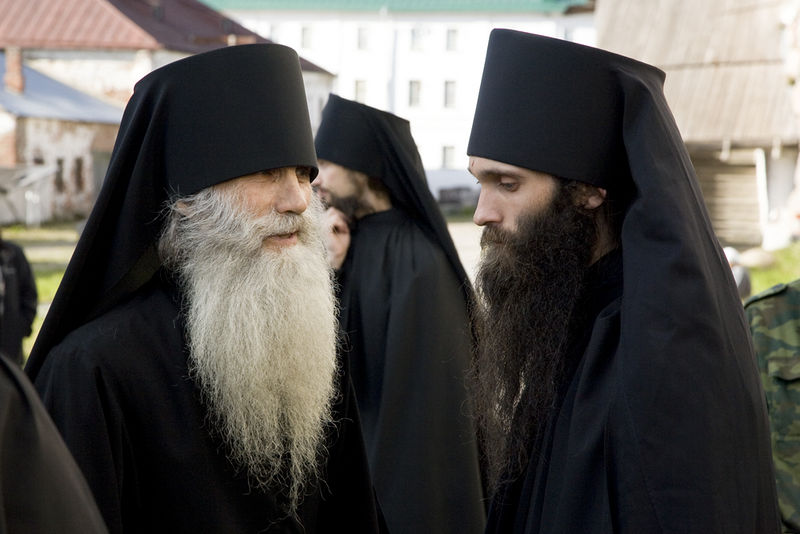 Father and son.
Father and son.
|
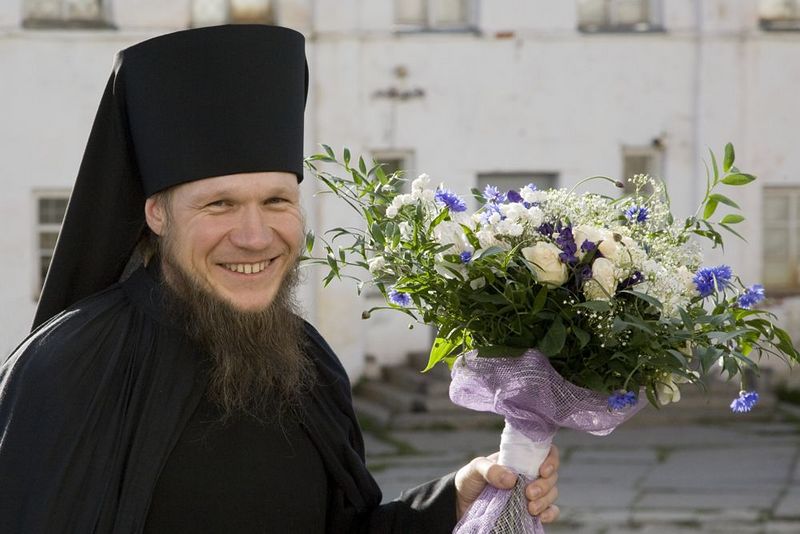 Waiting with flowers for the Patriarch.
Waiting with flowers for the Patriarch.
|
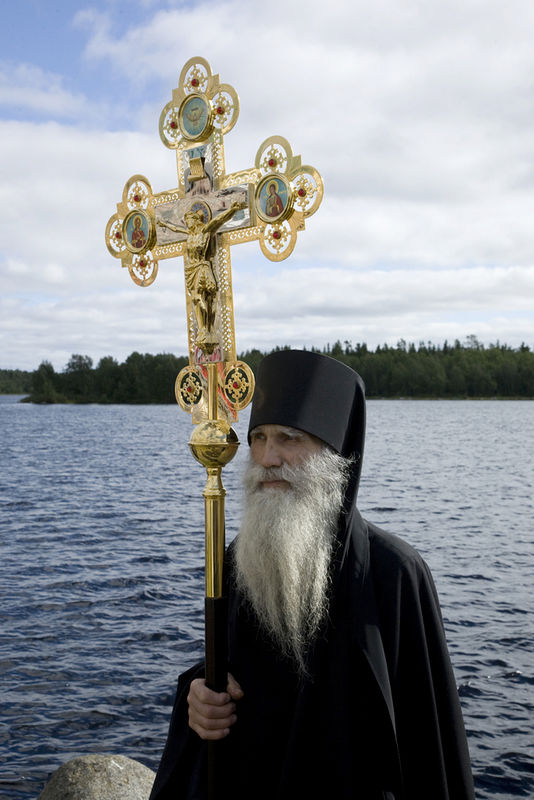 Cross-bearer.
Cross-bearer.
|
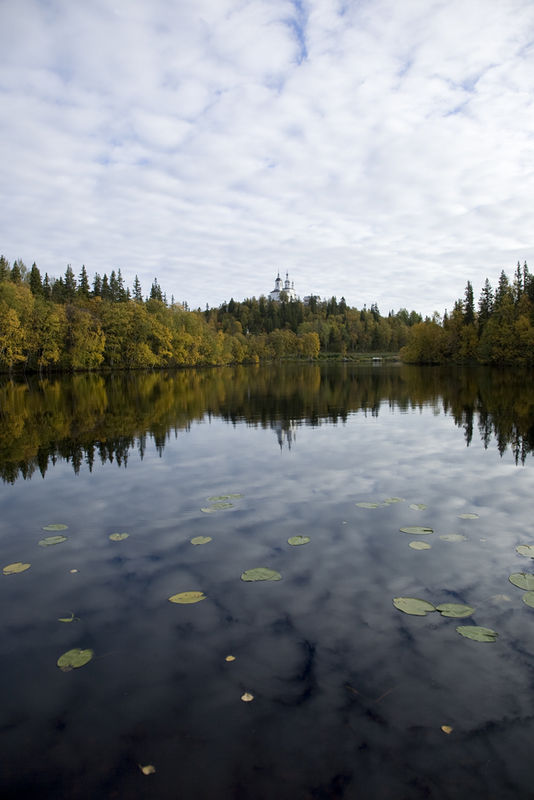 Golgotha hill.
Golgotha hill.
|
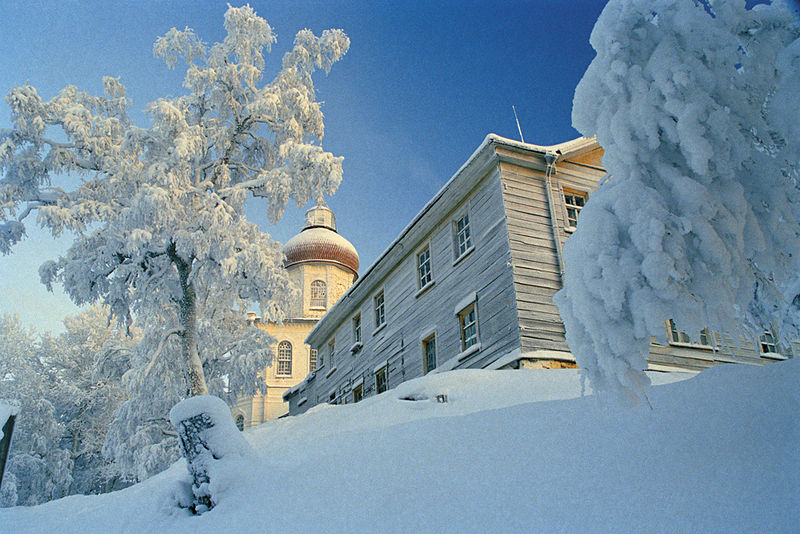 On Sekira hill in winter.
On Sekira hill in winter.
|
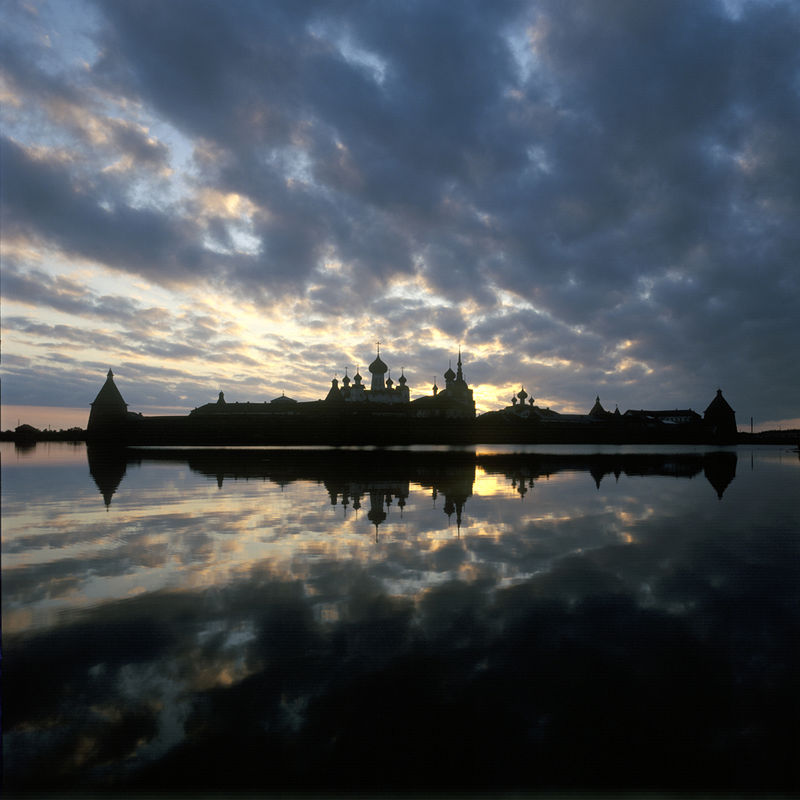 Solovki silhouette.
Solovki silhouette.
|
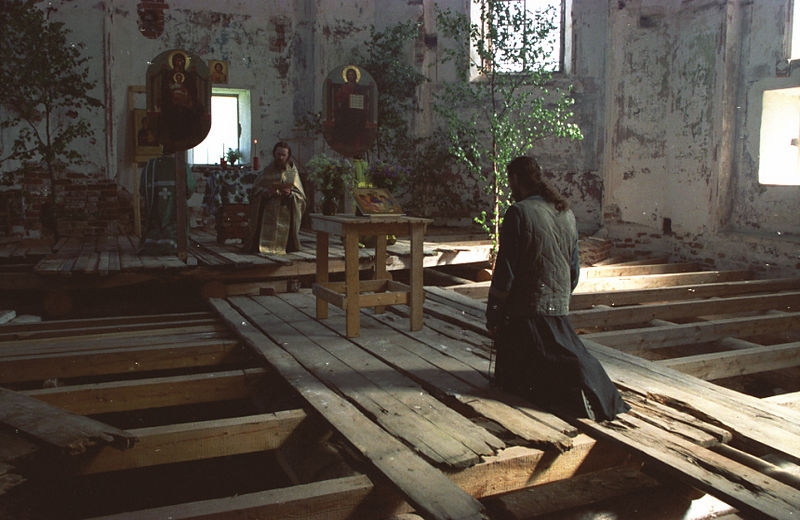 Pentecost.
Pentecost.
|
